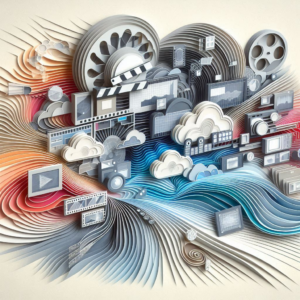VFX Production for Immersive Storytelling Experiences
The Importance of VFX Production in Modern Storytelling
In the ever-evolving landscape of film and television, VFX production plays a crucial role in enhancing storytelling. It serves as a bridge between imagination and reality, enabling creators to bring complex narratives to life. From fantastical creatures to breathtaking environments, VFX production has transformed how audiences experience stories, allowing for immersive worlds that captivate the imagination. As the demand for high-quality VFX production grows, the need for collaborative platforms becomes increasingly important.
The Need for a Collaborative VFX Platform
As entertainment projects push the boundaries of creativity, the pressure on VFX production teams has intensified. Directors and producers expect intricate visuals, often requiring rapid iteration and seamless coordination. Therefore, a collaborative VFX platform is essential. It facilitates communication between vendors, artists, and creators, allowing them to share resources and feedback in real time. Moreover, it helps teams manage remote workflows efficiently, especially as the industry continues to embrace hybrid and remote work models.
Cloud-Based Solutions
The introduction of cloud-based VFX production solutions revolutionizes how visual effects are created. Artists can access virtual workstations from anywhere, eliminating the need for high-end local hardware. This not only democratizes the industry but also enhances efficiency by allowing professionals to contribute their skills regardless of location. Cloud-based rendering further speeds up production cycles, ensuring that visual effects are completed on schedule.
Key Features
A robust VFX production platform must include several critical features to optimize workflow:
1. Integrated Storage Solutions: Artists can access and manage assets securely, ensuring consistency across projects.
2. Scalable Rendering Capabilities: Cloud rendering allows intensive computational tasks without the need for expensive local hardware.
3. Real-Time Collaboration: Teams can provide instant feedback, reducing revision cycles and improving project accuracy.
4. On-Demand Resource Allocation: Artists and vendors can contribute based on project needs, optimizing efficiency and preventing bottlenecks.
These features ensure that it remains agile and adaptable in an industry where workloads fluctuate frequently.
Expanding the Global Reach of VFX Production
For VFX production to evolve, accessibility must be a priority. By establishing partnerships with global vendors and studios, cloud-based platforms can offer tailored solutions to different markets. This fosters diversity in artistic collaboration and encourages innovation by merging cultural influences. The goal is to create a worldwide ecosystem where talent, creativity, and technology intersect, leading to groundbreaking storytelling experiences.
How Remote Collaboration Enhances VFX Production
Remote collaboration has transformed VFX production, enabling artists to work seamlessly across time zones. Advanced communication tools, real-time rendering previews, and shared asset libraries allow for efficient project management, regardless of location. With secure cloud environments, production teams can focus on creativity without logistical challenges. This shift empowers VFX artists to explore new techniques and refine their work without the limitations of a physical studio.
Technological Innovations Shaping the Future of VFX Production
Beyond collaboration, technology is redefining VFX production trends. AI-driven tools and machine learning algorithms automate time-consuming tasks, allowing artists to focus on creativity. Real-time rendering advances enable immediate visualization of changes, accelerating decision-making and improving storytelling. As AR and VR technologies integrate further, immersive experiences will become even more dynamic, pushing VFX production to new frontiers.
Sustainability
With environmental concerns rising, sustainable practices in VFX production are becoming more critical. Cloud-based platforms reduce reliance on physical infrastructure, lowering energy consumption and carbon footprints. Remote collaboration minimizes travel emissions, and optimized rendering techniques can further decrease resource wastage. By embracing green technologies, the VFX production industry can contribute to a more sustainable future while maintaining high-quality output.
Future Trends and Innovations
Investment in research and development is crucial for advancing VFX production. Technologies such as Cloud-Based Smart Manufacturing Service Applications could influence how VFX pipelines are structured, introducing greater automation and integration. Partnerships between technology providers, production studios, and independent artists will drive the industry forward, ensuring that storytelling remains visually compelling and technically advanced.
Conclusion
The future of VFX production is being shaped by cloud-based collaboration, technological advancements, and sustainable practices. As creative professionals embrace remote workflows and AI-driven tools, storytelling will reach new heights. Moreover, cloud-based solutions are playing a pivotal role in supporting the industry’s growth by improving efficiency and accessibility.
Cloudastra Technologies offers specialized solutions for VFX production, empowering creators with cutting-edge tools to enhance collaboration. Our commitment to innovation and sustainability ensures that your projects can thrive in a connected environment. Explore how our solutions can support cloud-based smart manufacturing service applications, revolutionizing content creation in the visual effects industry.
Do you like to read more educational content? Read our blogs at Cloudastra Technologies or contact us for business enquiry at Cloudastra Contact Us.
